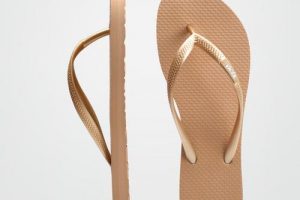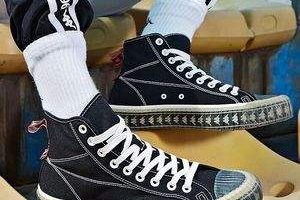Introduction
Shoes have played a pivotal role in human history and culture for thousands of years. Beyond their practical purpose of protecting our feet, they have become symbols of style, status, and self-expression. From the earliest rudimentary sandals to the latest high-fashion footwear, shoes have witnessed an intriguing journey of evolution and adaptation. In this extensive exploration, we delve into the history and inheritance of classic shoes, offering a comprehensive look at their evolution, significance, and the stories that have shaped our global shoe culture.
Chapter 1: The Beginnings of Footwear
1.1 The Earliest Foot Coverings
The history of footwear dates back to prehistoric times when humans began crafting rudimentary foot coverings to protect their feet from harsh terrains. These early shoes were simple and functional, made from materials such as animal hide, leaves, and grass. For instance, the Ötzi the Iceman, a well-preserved natural mummy from around 3300 BC, was discovered in the Alps wearing primitive shoes made from plant fibers and animal skins.
1.2 Sandals and Ancient Civilizations
As civilizations developed, so did the art of shoemaking. In ancient Egypt, Greece, and Rome, sandals emerged as a popular footwear choice. These early sandals were often crafted from leather and decorated with intricate designs, reflecting the wearer’s social status and wealth. The Roman Empire, in particular, contributed to the spread of sandals and paved the way for advanced shoemaking techniques.
Chapter 2: Footwear Through the Ages
2.1 Medieval European Footwear
The Middle Ages marked a period of great innovation in footwear. Leather became the primary material for shoes, and different styles emerged based on practicality and social rank. Peasants wore simple leather shoes, while nobility flaunted highly decorative and pointed shoes, some of which were so elongated that they required strings to keep them from tripping over.
2.2 The Renaissance and the Birth of Heels
During the Renaissance, Italy became a hub for shoemaking, and this period saw the introduction of heels. High heels were initially designed for equestrian purposes, offering better stability in the stirrups. However, their popularity soon extended to fashion, and they became a symbol of aristocracy and power.
2.3 The Industrial Revolution and Mass Production
The Industrial Revolution in the 18th century marked a significant turning point in the history of shoes. Mass production techniques revolutionized the industry, making footwear more affordable and accessible to a wider population. It also led to the standardization of shoe sizes, a development that greatly influenced the modern shoe market.
Chapter 3: Iconic Shoe Styles
3.1 The Oxford and the Brogue
The 19th century saw the emergence of iconic shoe styles that continue to influence fashion today. The Oxford, with its closed lacing system, became a staple of formalwear, while the Brogue’s signature perforations were originally designed to drain water when crossing wet terrains. Both styles remain classic choices for men’s formal and casual footwear.
3.2 The Ballet Flat and Stiletto Heel
The 20th century brought the Ballet Flat into prominence, offering women a comfortable yet elegant option. In contrast, the Stiletto Heel, introduced in the 1950s, symbolized feminine glamour and sensuality. These two styles showcase the diverse roles that shoes have played in women’s fashion and comfort.
Chapter 4: Modern Shoe Culture
4.1 Sneakers: From Sports to Streetwear
Sneakers have transitioned from athletic gear to a global fashion phenomenon. We explore their roots in sports, their role in youth culture, and the collaborations between luxury brands and sneaker designers that have elevated them to coveted collector’s items. Iconic examples like the Air Jordan and Adidas Superstar tell compelling stories of their own.
4.2 Luxury Footwear: Louboutin and Manolo Blahnik
The world of luxury footwear has seen the rise of renowned designers like Christian Louboutin and Manolo Blahnik. These designers have pushed the boundaries of shoe design, creating works of art that combine exquisite craftsmanship with high fashion. The red-soled Louboutin heels and the exquisite detailing of Manolo Blahnik’s creations have made them must-have items for the elite.
Chapter 5: The Cultural Significance of Shoes
5.1 Shoes in Religion and Symbolism
Shoes hold profound symbolic importance in various religious and cultural traditions. We explore the significance of removing shoes before entering places of worship, the symbolism of the Pope’s red shoes, and the role of shoes in rituals and ceremonies around the world.
5.2 The Impact of Shoes on Identity
Shoes are more than just fashion statements; they are integral to one’s identity. We delve into how shoes can reflect a person’s personality, occupation, and social standing. From military boots to iconic movie footwear like Dorothy’s ruby slippers, we discuss how shoes define characters and cultures.
Chapter 6: The Craftsmanship and Artistry
6.1 Shoemaking Techniques
Shoemaking is a blend of art and craftsmanship. This chapter explores traditional and contemporary shoemaking techniques, from handcrafted Goodyear welted construction to cutting-edge 3D printing. We also highlight master shoemakers and the intricate process of creating bespoke shoes.
Chapter 7: Sustainability and the Future of Shoes
7.1 Sustainable Shoemaking
As the world grapples with environmental concerns, the footwear industry is also embracing sustainable practices. We discuss innovative materials, eco-friendly manufacturing, and the rise of ethical fashion in the realm of shoes.
7.2 The Future of Footwear
What does the future hold for shoes? From smart shoes with integrated technology to the intersection of fashion and sustainability, we speculate on the exciting developments that lie ahead for shoe culture.
Conclusion
Shoe culture is a rich tapestry of history, innovation, and self-expression. From the earliest foot coverings to the iconic styles of today, the evolution of footwear is a testament to human creativity and adaptability. As we continue to embrace the significance of shoes in our lives, it’s essential to recognize their historical and cultural relevance, the stories they tell, and the craftsmanship that goes into creating each pair. In understanding the past, we can better appreciate the future of shoe culture and the enduring legacy of classic footwear.
















Add Comment